Railroads in Licking County
Introduction
Text-to-speech Audio
The coming of the railroad to Licking County in the 1850's and its expansion throughout the nation during the 1800's placed central Ohio at the center of a national economy. With early roads being slow to travel, canals freezing in winter, and steamboats restricted to navigable rivers, the railroad was critical to American technology and commercial development. Ohio was crisscrossed by a network of rails connecting the Great Lakes to the southern states and the agricultural Midwest to the industrial East. Newark was strategically located near the center of this important development. As early as the 1830's, the railroad was considered important in Licking County. In September 1835, interested parties resolved to "devise methods" to build the Newark and Milan (Huron County) railroad. In December, railroad proponents again gathered to discuss the extension of the Baltimore and Ohio Railroad from Wheeling westward. Although these early attempts proved unsuccessful, by the 1850's new railroads were under construction throughout central Ohio. In July 1851, the Steubenville and Indiana Railroad Company notified contractors of its intent to complete a rail line from Newark through Coshocton to Steubenville on the Ohio River. This route was completed in April 1855. By the early 1850's, the Sandusky, Mansfield and Newark Railroad and the Central Ohio line were in operation. During the mid-1850's, the Steubenville and Indiana Railroad was completed as far as Newark. Like most early railroads, this line experienced financial difficulties. Following the Civil War, it became part of the Pittsburgh, Cincinnati and St. Louis Railroad, better known as the Pan Handle Line. In 1880, the company built a new passenger depot and freight house in Newark. The Pennsylvania Railroad later assumed control of the road. Another railroad that passed through Licking County was the Toledo and Ohio Central. Constructed in the 1880's, this line bypassed Newark because the city refused to contribute to its construction. Its line crossed the northwest corner of Licking County.
Images
These photos show employees at the B&O roundhouse, supervisory staff, and the shop force in 1933 and 1934.
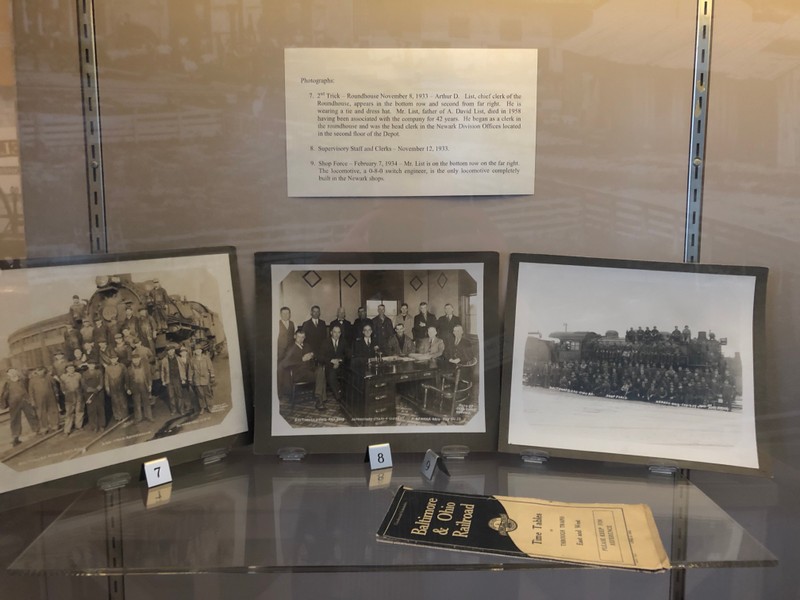
Artifacts from the B&O, including a journal of railroad employee correspondence, a travel pass, payroll ledgers, lanterns, calipers, and a plate from the Capitol Limited line of the B&O.
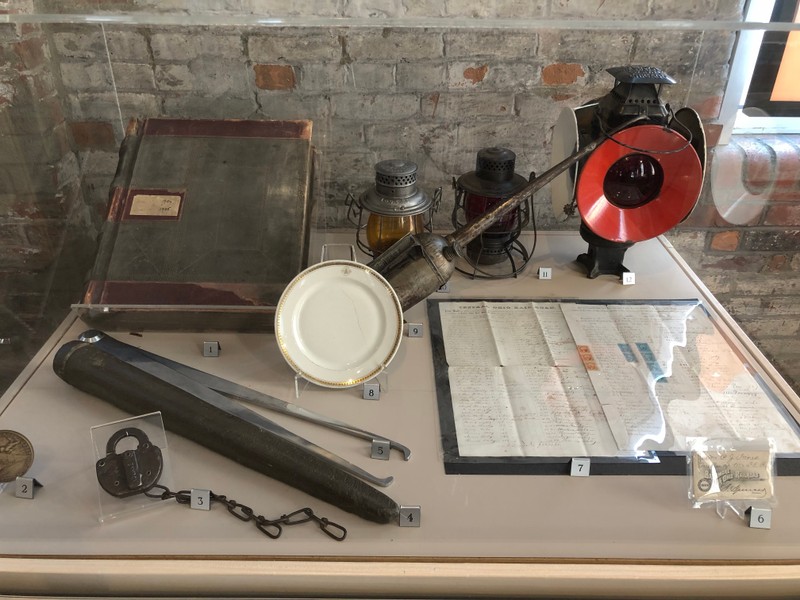
A variety of B&O memorabilia is on display, including photos, a model engine, and a uniform belonging to William Andrew Hiatt, B&O conductor from 1917 to 1942.
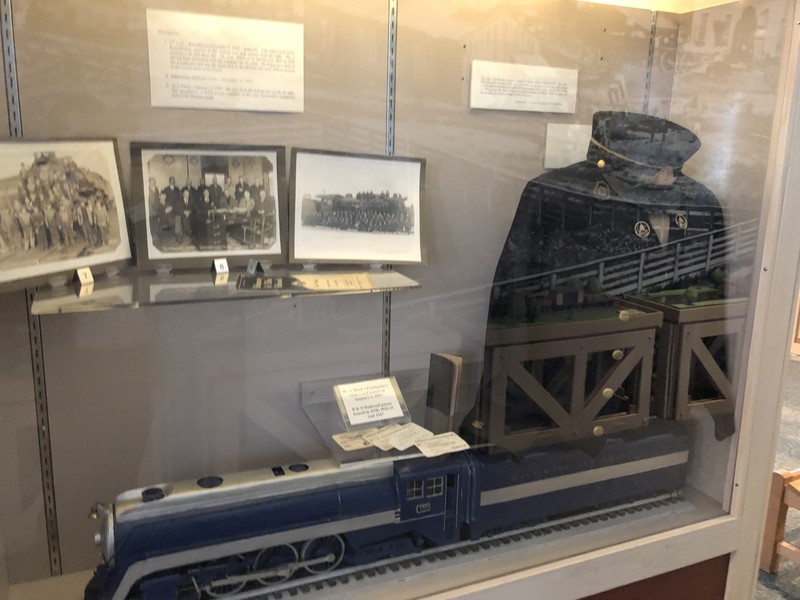
Pennsylvania Railroad passenger station, located on Walnut Street in downtown Newark.
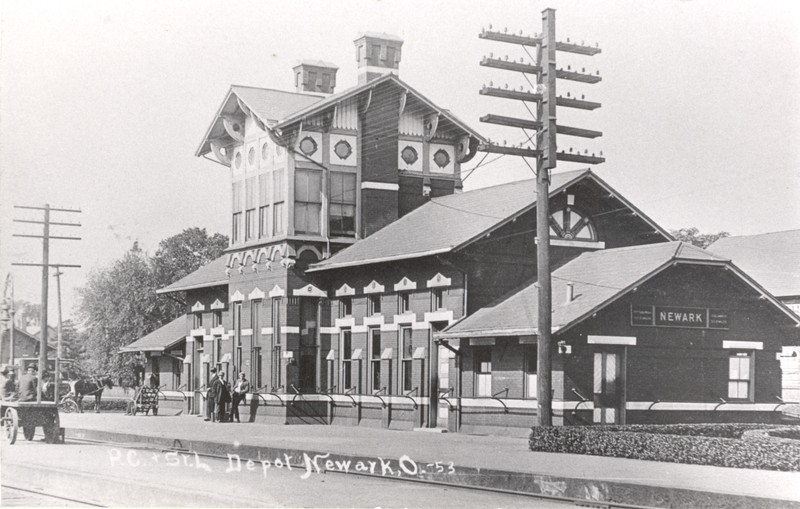
The B&O passenger depot was located near The Works, at the confluence of the railroad tracks on Yearly Street south of East Main Street.
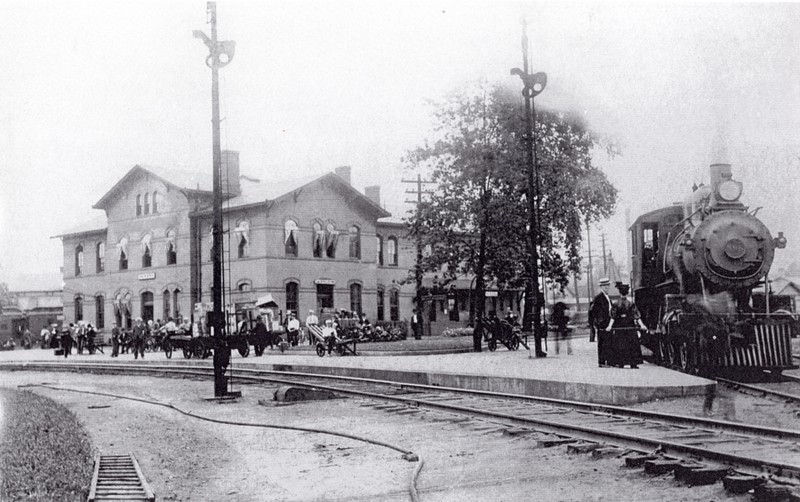
An aerial view of the B&O roundhouse and rail yard.
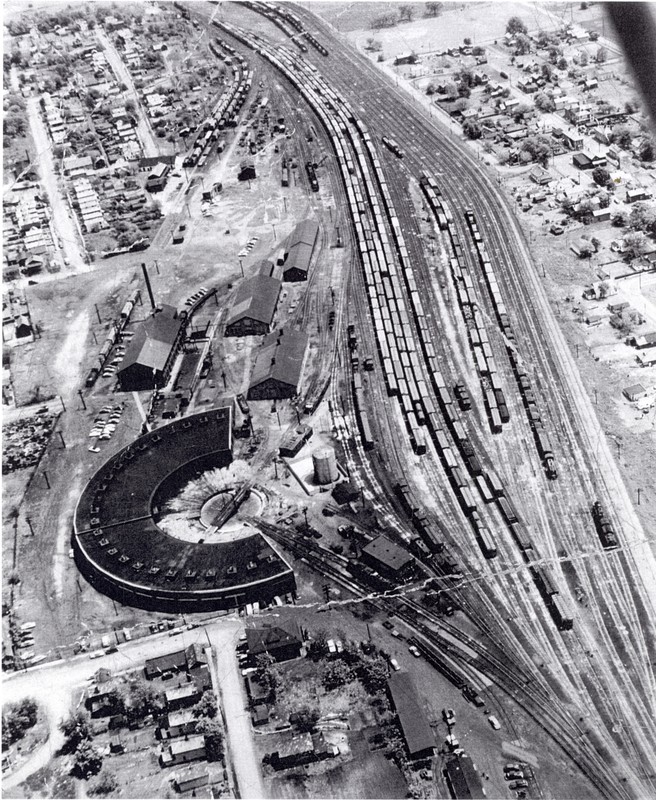
Backstory and Context
Text-to-speech Audio
The Baltimore and Ohio Railroad
The Baltimore and Ohio Railroad (B&O) became one of the largest in the nation. Its route west from Baltimore and Washington was difficult to build because of numerous geographical features that had to be crossed in order to reach Ohio. Once the rail line reached Ohio however, it developed rapidly. In 1866, the B&O leased the Central Ohio Railroad for 20 years. By 1875, the B&O had taken control of the Sandusky, Mansfield and Newark Railroad, as well as the Newark, Somerset and Straitsville Railroad. These acquisitions gave the B&O three divisions operating in different sections of Ohio and connected Baltimore to Chicago for the first time.
These divisions continued to operate well into the 1900's. During the first have of the century, an average of 90 freight and 25 passenger trains passed through Newark daily. On June 30, 1961, the last Baltimore and Ohio passenger train left Newark. Nearly 24 years later, the last train to originate from Newark left the B&O yard on March 3, 1985. This event signaled the end of the glory days of railroading in Newark.
B&O Roundhouse and Rail Yard
In 1873, the Baltimore and Ohio Railroad Company built "...the most extensive car shops to be found in the west" in Newark. the facility included ten separate buildings and employed as many as 800 men as machinists, mechanics, molders, pattern makers, Blacksmiths, and car builders. The Newark Rail yard was the headquarters for four divisions of the B&O - the Lake Erie, Columbus, Shawnee, and Central Ohio divisions.
A unique feature of many rail yards were the roundhouses and turntables. A roundhouse is a large circular or semicircular building with multiple stalls for the storage and repair of locomotives or other rail cars. A turntable allows a single track access to all the stalls. A twenty-five stall roundhouse was built at the Newark Rail Yard in 1905. The roundhouse included drop pits in several stalls to allow mechanics to work on locomotives from beneath them. The Chesapeake and Ohio Railroad purchased most of the B&O in 1963, including the rail yards in Newark. Within a few years of the purchase, the roundhouse and most of the other buildings in the yard were dismantled.
